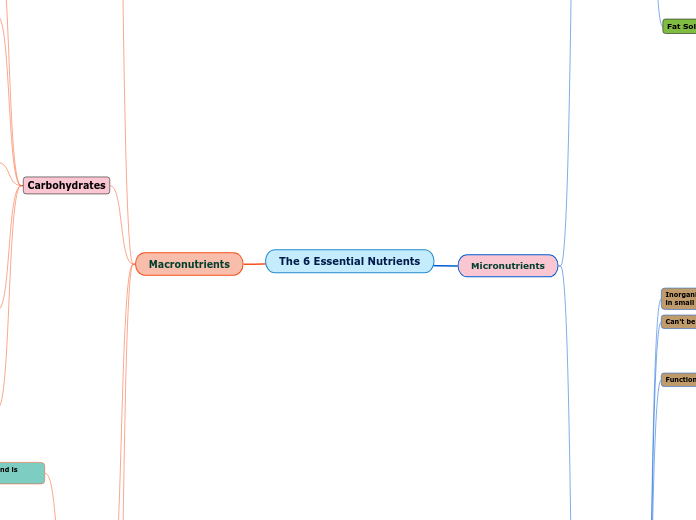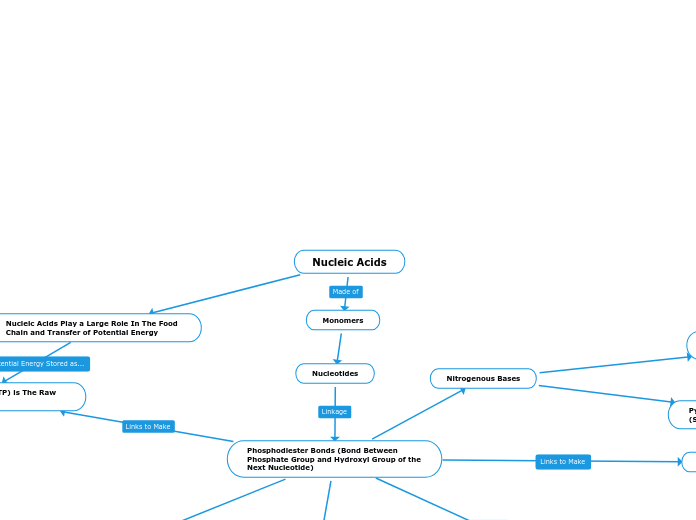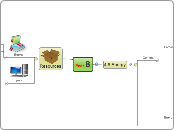The 6 Essential Nutrients
Macronutrients
Protein
Marasmus
It's possible for someone to have symptoms of both Kwashiorkor and Marasmus, this is called marasmic kwashiorkor.
Symptoms include: Severe depletion of body fat and muscle
The body breaks down muscle and body fat due to the malnutrition
A severe form of starvation and malnutrition
Caused by inadequate energy
consumption from all macronutrients,
Kwashiorkor
Symptoms include: Swelling of the feet, legs, and arms, bulging abdomen, discoloured skin, thinning/lightening of hair, body sores, and loss of energy
Often seen in children who are malnourished
and/or victims of famine due to the lack of nourishment
The person gets the required amount of
calories, but they mainly come from carbohydrates. The carbs fight off the feeling of being full but don't supply the nutrients for development and growth.
Kidney Damage
May result in the body needing to perspire more and produce more urine because of the amount of work the kidneys do.
Kidneys try to flush out the by-products created by the breakdown of unneeded amino acids
Amino Acids
There is 22 amino acids
The component part of protein
Chemical building blocks
Incomplete Protein
Can be found in: apples. oranges, carrots, lettuce, peppers, and kale
Except for soybeans, quinoa, all foods from plant sources are incomplete proteins
Incomplete proteins are proteins that are lacking one or more essential amino acids
Plant Products
Complete Protein
Can be found in: Steak, lamb, chicken, salmon, tofu, eggs, and milk
Proteins that supply all 9 essential amino acids
Animal Products
Helps fight disease
Enzymes help promote body processes
such as absorption and digestion of
nutrients
Used to help the body grow and repair worn-out, damaged parts
Water
Dehydration
Symptoms include: Dizziness, fatigue, elevated body temperature, increased heart rate, cramping, headaches, nausea, weakness, dry mouth, and dark urine.
The excessive loss of water from the body
Drinking a lot of water at once can put stress on the bladder and kidneys as they are unable to process the water properly
Toxic amounts of water may be dangerous
Acts as a shock absorber in our eyes joints and spinal cord and joints
Helps flush out our body's waste material
Lubricates our joints
Helps maintain normal body
temperature
Delivers nutrients to cells
Our body is made up of 75% water and is critical for survival
Carbohydrates
Deficiency
Ketosis
A condition that results from the body using fats as the main source of energy
Can lead to: loss of muscle mass, loss of
energy, and weakness
The body begins to break down fats for energy due to the lack of carbs which results in the production of ketones
Can also lead to, insulin resistance,
heart disease, diabetes, and tooth decay
Eating large amounts of sweetened foods can
lead to weight gain, which can contribute to
health problems.
Due to the body not being able to store an excess of carbs, the body uses the excess for energy instead of fat, causing weight gain.
Complex Carbohydrates
Dietary Fibre
Can only be found in plants such as: Carrots,
berries, oats, rye, and barley
Insoluble fibre promotes regular bowel movements and helps prevent constipation. Soluble fibre may reduce blood cholesterol levels.
The only carbohydrate
that doesn't provide energy
Starches
Found in: Potatoes, oats, and
dried beans
Made up of multiple glucose
molecules called polysaccharides
Carbohydrates that are made
of multiple sugar molecules
Simple Carbohydrates
Sugars
Sugars include: Glucose, fructose, maltose, lactose, sucrose (table sugar). Refined sugars include corn syrup, brown sugar and molasses
Can be found in: Milk, cookies, cakes, and
fruit juice concentrate
Carbohydrates made with
1 or 2 sugar molecules
Your brain needs a constant supply of
carbohydrate to function
To provide energy to the body
Fats
Cholesterol
High-density lipoprotein (HDL) cholesterol
Moves LDL through the arteries
which combats its negative effects
Called good/healthy cholesterol
Low density lipoprotein
(LDL) cholesterol
Can contribute to heart disease if there is high levels
Called bad/unhealthy cholesterol
A chemical substance produced in the body and consumed in foods of animal origin
Excess
High Cholesterol
Individuals who have high blood cholesterol need to choose soluble fibre and unsaturated fats, which help to reduce HDL levels
Associated with heart disease, stroke, and heart attack
Cardiovascular Disease
Trans fat, saturated fat and cholesterol all promote plaque build up in the arteries
Atherosclerosis, heart attack and, stroke are
all linked to high intakes of fat
Refers to any disease that affects the heart and the blood vessels
Obesity
Links to diabetes, various cancers, stroke and heart disease
The number of Canadian adults that are obese tripled since 1985
Trans Fat
Can be found in: Shortening, most hard margarines, commercial cookies, and commercial crackers
Increases risk of stroke and heart attack
Raised the LDL levels while lowering HDL levels
Most are formed when unsaturated fat goes through a process called hydrogenation which is when a unsaturated fat that is liquid at room temperature gets modified by adding hydrogen atoms to the fatty acid. This results in the fat becoming solid.
Occur naturally in some animal products
Are solid or semi solids
Unsaturated Fat
Can be found in: Olive oil, canola oil, avocado, olives, peanuts
Can reduce cholesterol levels and LDL cholesterol levels while raising HDL levels
A fat that typically comes from a
plant source. It is liquid at room temperature
Saturated Fat
Examples include: Butter, cakes, fatty cuts of meat, and sausages
Foods high in saturated fat are deemed not "heart healthy" as they cause the body to synthesize LDL and raise blood cholesterol levels in the body
A fat that typically comes from animal or milk products. It is solid at room temperature
Carries fat-soluble vitamins
Helps the absorption of vitamins and minerals
A concentrated source of energy
Provides stored energy to the body
Micronutrients
Minerals
Trace Minerals
Selenium
Sources: Eggs, fish, liver, pork, nuts, whole grains
Toxic Levels Symptoms: Fingernail and hair loss,metallic/garlic breath
Deficiency Symptoms: Muscle pain, anemia
Function: Acts as a antioxidant, needed for thyroid hormone production
Fluoride
Sources: Fluoridated water, shrimp, tea, and bread
Toxic Levels Symptoms: Skeletal fluorosis, dental fluorosis
Deficiency Symptoms: Dental disease, tooth decay
Function: Helps keep bones and teeth healthy
Iodine
Sources: Seaweed, iodized salt, seafood, kelp
Toxic Levels Symptoms: Thyroid disease, decreased thyroid function
Deficiency Symptoms: Thyroid disease, goiter, cretinism
Function: Part of thyroid hormones
that helps control the metabolism
Zinc
Sources: Beef, poultry, pork, nuts, grains, bread, milk
Toxic Levels Symptoms: Metallic taste in mouth, weakness nausea, vomiting
Deficiency Symptoms: Slow wound healing, stunted growth, loss of taste, appetite and hair
Function: Helps heal wounds, component of insulin and enzymes, helps keep eyes, nails and hair healthy
Iron
Sources: Beef, pork, poultry, fish, legumes, prunes, spinach, fortified flour
Toxic Levels Symptoms: Decreased zinc
absorption, blue discoloration of the skin, vomiting, abdominal pain, and increases heart disease risk
Deficiency Symptoms: Weakness, anemia, fatigue and pale complexion
Function: An important part of hemoglobin
in the blood and is needed for oxygen to be transferred to the bloodstream
Needed in small amounts a day
Macrominerals
Chloride
Sources: Sea and table salt, tomatoes, rye, seaweed
Toxic Levels Symptoms: Increased blood pressure, vomiting
Deficiency Symptoms: Poor appetite, muscle cramps
Function: Helps maintain body acidity, is a part of the hydrochloric acid in the stomach, and helps maintain the water balance in the body
Potassium
Sources: Dried fruits, potatoes, milk, bananas, beans, and lentils
Toxic Levels Symptoms: Nausea and irregular heartbeat
Deficiency Symptoms: Paralysis, constipation, irregular heartbeat, and weakness
Function: Helps with digestion and muscular function, maintains fluid balance
Sodium
Sources: Sea and table salt, foods that are processed with salt
Toxic Levels Symptoms: Kidney disease, irregular heartbeat, high blood pressure
Deficiency Symptoms: Fatigue, weakness, muscle cramps
Function: Helps blood pressure control, needed for nerve and muscle functions
Magnesium
Sources: Fish, legumes and whole grain cereal
Toxic Levels Symptoms: Dehydration and diarrhea
Deficiency Symptoms: Weakness, muscle spasms, stunted growth in children
Function: Needed in the function of the nerve system and muscles, builds teeth and bones
Phosphorus
Sources: Beef, pork, poultry, legumes, fish
Toxic Level Symptoms: Muscle spasms, and diarrhea
Deficiency Symptoms: Appetite loss, loss of calcium in the bones, nausea, and weakness
Function: Works with calcium to build teeth and bones
Calcium
Sources: Milk, milk products, fish with edible bones, legumes, broccoli
Toxic Level Symptoms: Constipation, inhibits zinc absorption, and kidney stones
Deficiency Symptoms: Osteoporosis, and stunted growth
Function: Builds teeth and bones, used by blood vessels to help blood transport, and used by nerves and muscles
Are needed daily and in large amounts (100mg a day)
Helps cells become hormones and enzymes
Helps balance the bodys acidity
Helps nerves function properly, muscle contraction, and helps the heart keep its rhythm
Provide structure in forming teeth and bones
Can't be destroyed or created by the body
Inorganic compound or element that is needed in small amounts by the body
Vitamins
Fat Soluble
Vitamin K
Sources: Plant oils (canola, olive etc), and dark green leafy vegetables
Toxic Levels Symptoms: jaundice, and liver
toxicity in children
Deficiency Symptoms: Frequent bruising, poor blood clotting
Function: Helps blood clot
Vitamin E
Sources: Wheat germ, plant oils, egg yolks
Toxic Levels Symptoms: Internal bleeding
diarrhea , and weakness
Deficiency Symptoms: Muscular weakness. vision problems
Function: Helps maintain the immune function
Vitamin D
Sources: Fortified milks, fish oils, when the body is exposed to sunlight
Toxic Levels Symptoms: Excess of calcium in the blood (hypercalcemia), nausea, kidney damage, and weakness
Deficiency Symptoms: Rickets, weakness, bone pain
Function: Helps the absorption of calcium which builds strong teeth and bones
Vitamin A
Sources: Liver, some fish, cheese, milk
Toxic Levels Symptoms: Headache, nausea, and
blurred vision
Deficiency Symptoms: Blindness and
night blindness
Function: Helps with vision
and promotes growth, healthy hair
and healthy skin
Can be stored in fatty tissues so it is not
necessary to have them each day as they can become toxic
Dissolved in fats and are
carried throughout the body
Water Soluble
Types
B-Vitamins
B12
Sources: Fortified soy products, milk, eggs, poultry and meat
Deficiency Symptoms: Weakness, anemia. and loss of balance
Function: Helps cell growth, protects nerve fibres, creates red blood cells
Folate
Sources: Leafy green vegetables, legumes, enriched pasta and grain products, poultry, and beef
Deficiency Symptoms: Sore tongue, and anemia
Function: Important for development of babies, and needed for the formation of red blood cells
B7
Sources: Egg yolks, brewers yeast, sardines, legumes, and nuts
Deficiency Symptoms: Hair loss, insomnia, scaly skin, dermatitis, and dry eyes
Function: Needed for healthy nails and hair, helps the body use the energy from macronutrients
B6
Sources: Poultry, fish, meat, lentils, nuts, and leafy green vegetables
Deficiency Symptoms: Short term memory loss, muscle weakness. and irritation of the skin
Function: Needed for brain function and development, helps the body use energy from macronutrients
B5
Sources: Egg yolks, liver, sweet potatoes, broccoli, cheese, soybeans etc.
Deficiency Symptoms: Vomiting, cramps, fatigue, irritability
Function: Helps the body build red blood cells, helps the body use energy from macronutrients
Niacin
Sources: Peanut butter, chicken, beef, fish, pork, whole grain breads and cereals
Deficiency Symptoms: Dermatitis, diarrhea, and pellagra
Function: Keeps the nervous system healthy, helps the body use macronutrients energy, helps aid digestion
Riboflavin
Sources: Milk, liver, dark green vegetables, whole grain cereals and breads
Deficiency Symptoms: Scaly and dry facial skin, smooth and purplish tongue, and cracks in the corner of the mouth
Function: Helps keep lips, tongue, eyes and skin healthy, helps the body use protein, carbohydrates, and fat
Thiamin
Sources: Pork, liver, green vegetables, whole grain breads and cereals, yeast
Deficiency Symptoms: Beriberi - characterized by rapid heart rate, vomiting, difficulty walking, loss of feeling in hands and feet, and shortness of breath
Function: Helps release the energy from carbohydrates in food
Vitamin C
Sources: citrus fruits (oranges, lemons), strawberries, peppers, and tomatoes
Deficiency Symptoms: Scurvy, dry skin, bleeding gums, bruising
Function: Boosts the immune system, keeps gums healthy helps repair and form bones, tissues and blood, and prevents bruising
Unused vitamins are flushed out in urine, which is why they are needed every day
The body doesn't store these vitamins
Function
Help prevent disease
Help regulate body processes such as blood clotting and growth
A organic compound that is needed in small amounts to help promote normal growth and development









